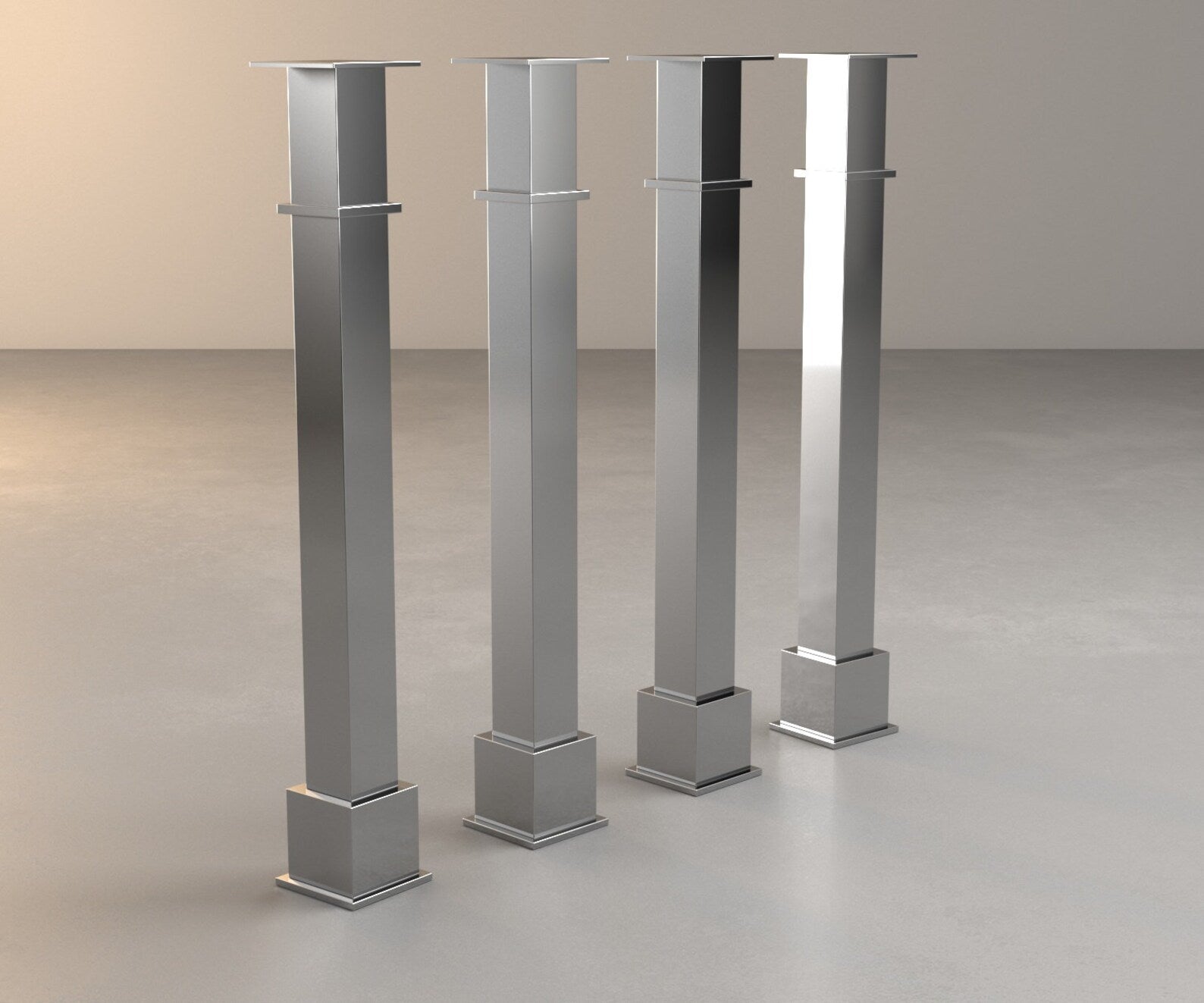Produce a Stunning Centerpiece with Classy Legs For Kitchen Island
Produce a Stunning Centerpiece with Classy Legs For Kitchen Island
Blog Article
A Guide to Selecting the Perfect Legs For Kitchen Area Island for Your Home
Picking the optimal legs for your kitchen area island is a nuanced choice that impacts both the capability and aesthetic charm of this central area. Aspects such as height, products, and design play an essential function in integrating your island with the overall cooking area layout. Furthermore, recognizing the importance of stability and maintenance can substantially influence your selection. As you consider these elements, it becomes obvious that the ideal legs can change not just the appearance of your cooking area yet also its usability for years to come. What particular functions should you prioritize in this choice process?

Understanding Cooking Area Island Legs
When choosing legs for a kitchen island, it's crucial to comprehend their functional and visual duties in the overall style. The legs act as an important assistance system, guaranteeing security and resilience for the island, which usually functions as an office, eating area, or gathering place. The choice of material and building method have to be durable enough to endure everyday usage and possible wear.
Along with their architectural responsibilities, legs contribute substantially to the island's aesthetic allure. They can boost the cooking area's design, whether through typical, modern, or diverse layouts. The elevation and percentage of the legs are additionally essential factors to consider; they must harmonize with the island's countertop height while ensuring comfortable seating for those using the space.
Moreover, the leg layout can affect the total circulation of the cooking area. Open, ventilated leg styles can produce a sense of lightness, while strong, significant legs might communicate a much more grounded and stable visual - Legs For Kitchen Island. Recognizing these useful and visual elements will guide homeowners in making educated selections that match their kitchen area's design and enhance its functionality
Popular Styles and Products
The selection of legs for a kitchen area island incorporates a range of popular styles and products, each offering one-of-a-kind attributes that can improve both functionality and aesthetic appeals. Amongst the most popular designs are modern, rustic, and conventional. Contemporary legs frequently include smooth, minimalist styles that emphasize simpleness and tidy lines, making them perfect for modern kitchen areas. Rustic styles, on the other hand, welcome natural environments and commonly showcase recovered timber or distressed coatings, adding heat and beauty to the area. Typical legs normally exhibit elaborate information and craftsmanship, boosting classic kitchen area layouts.

Elevation and Stability Factors To Consider

Stability is an additional crucial consideration. The legs of the kitchen island need to supply sufficient assistance, making sure that the structure can withstand everyday use without tottering or shifting. Material choice plays a considerable role in security; metal legs, for circumstances, have a tendency to offer higher strength contrasted to wood. In addition, guaranteeing that the island is firmly anchored to the flooring or wall can improve security, especially for bigger islands that may birth significant weight.
Matching Your Kitchen Area Visual
Selecting the best legs for your kitchen area island goes beyond performance; it likewise plays a considerable function in the general visual of the area (Legs For Kitchen Island). When selecting legs, think about the layout style of your kitchen area.
Legs that enhance or contrast with your island's surface and bordering cabinets can create visual consistency or striking focal points. In addition, think about the finish of the legs; matte, shiny, or distinctive finishes read here can significantly influence the general feel of the cooking area.
Setup and Maintenance Tips
Setting up cooking area island legs requires cautious attention to information to guarantee both security and visual charm. Utilize a stud finder to situate wall studs if you are affixing the legs to a wall surface or using braces for added support.
When safeguarding the legs, utilize premium screws and, if required, timber adhesive for added stamina. For steel legs, ensure that you are making use of proper supports and tools to avoid damages to your floor covering. It is suggested to check for levelness after installment, making changes as required to stay clear of wobbling.
Clean the legs with an discover this info here ideal cleaner, preventing abrasive materials that might scratch the surface area. By following these setup and upkeep ideas, you can make sure that your kitchen island legs stay both aesthetically enticing and functional.
Conclusion
In verdict, selecting the appropriate legs for a More about the author kitchen island necessitates mindful consideration of elevation, security, and visual compatibility. By picking ideal materials and designs that align with the overall cooking area layout, performance can be improved while keeping visual charm. Correct installation and recurring maintenance additionally add to the resilience and longevity of the cooking area island. Inevitably, thoughtful leg option plays a crucial role in elevating both the functionality and design of the kitchen space.
When selecting legs for a kitchen island, it's crucial to understand their practical and visual roles in the overall design. Open, ventilated leg styles can produce a sense of lightness, while strong, substantial legs might share an extra based and stable aesthetic. The legs of the cooking area island must supply adequate support, guaranteeing that the structure can hold up against everyday usage without shifting or wobbling.Setting up cooking area island legs calls for cautious focus to detail to make certain both security and aesthetic charm.In verdict, choosing the appropriate legs for a kitchen island requires careful consideration of elevation, security, and aesthetic compatibility.
Report this page